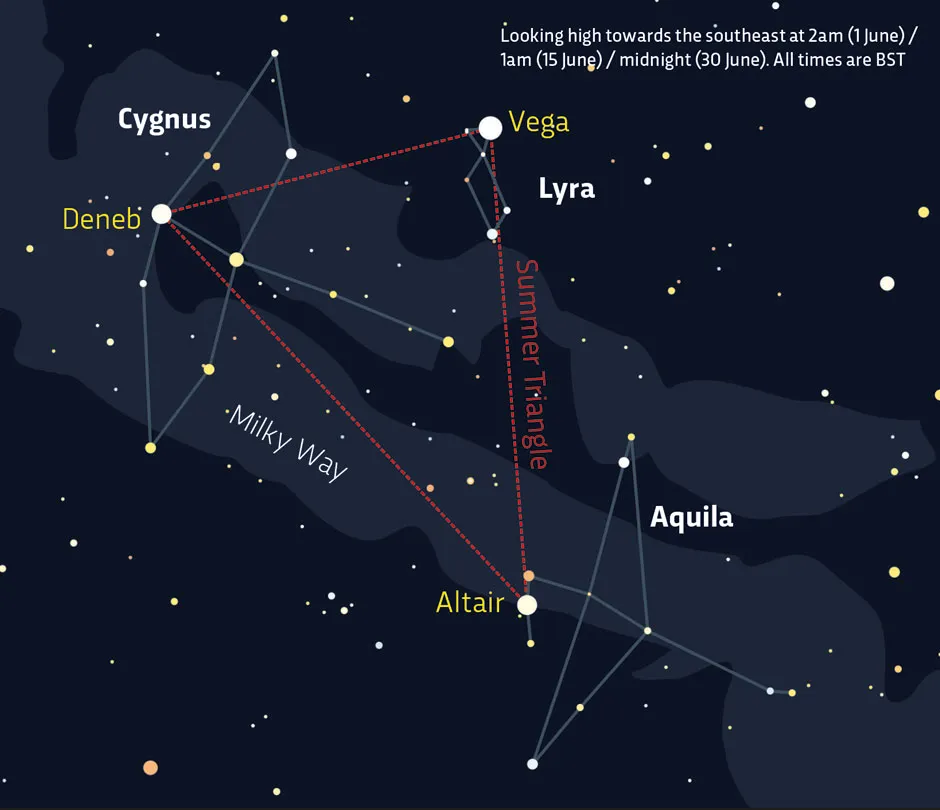When people think about stargazing, they might imagine it involves memorising all the constellations, but sometimes the best star patterns to look for aren’t constellations at all.
An ‘asterism’ is any pattern of stars that’s not one of the official 88 constellations. And one of the easiest asterisms to spot, especially during the northern hemisphere’s summer months, is the Summer Triangle.
The Summer Triangle is made up of three bright stars: Vega, Deneb and Altair. Each is in a different constellation: Lyra the harp, Cygnus the swan and Aquila the eagle respectively. The brightness of these stars means that the asterism is visible even in places with light pollution.

The Summer Triangle is visible for most of the year, but in July and August it shines directly overhead at around midnight.
June is a good time to see it, too, because it rises above the eastern horizon at around 23:00, so you can use the horizon as a reference. At this time, the sky won't be completely dark, so only the three stars in the triangle will be visible. Later in the night, fainter stars will become visible too (see the diagram above).
Read more stargazing tips:
- 9 stargazing tips to get you watching the stars from home
- A beginner's guide to stargazing, no telescope required
Vega is the brightest of the trio, so look first for this star. Then, to the lower left and lower right, you’ll find Deneb and Altair respectively. The trickiest thing about identifying the triangle is that it spans quite a large area of sky, but once you’ve seen it, you’ll learn how to recognise it.
If you live somewhere with low light pollution, you can use the Summer Triangle as a map to the Milky Way.
Pick a night with little or no moonlight (such as the few days surrounding the new moon on 21 June), wait until it is darkest (between 00:30 and 01:30), find the Summer Triangle, and look for a band of light passing through it. You’re looking edgewise into the flat disk of stars that makes up our Galaxy.
